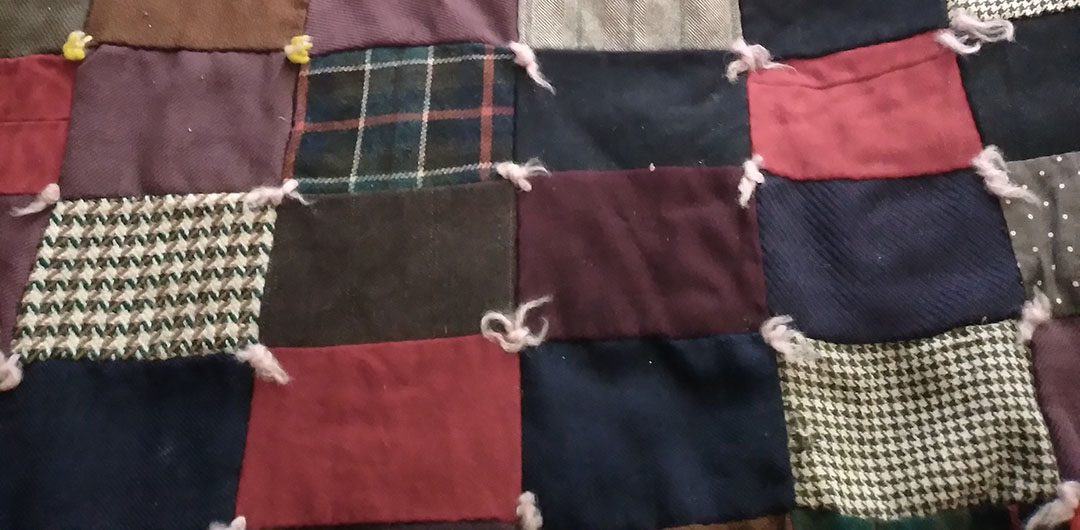It’s getting closer and closer to summer! This may be the wrong time of year for this, but I have been studying about early Upper Canada quilts. In particular the quilts in the Lynde House Museum in Whitby, Ontario, Canada. The Whitby Historical Society wants to do a video about them and I am working on the script.
We have many different types of quilts in the Museum, but the two most represented are simple tied squares quilts, like in the pictures below, and log cabin quilts.
Tied Squares
A couple of the tied squares quilts are made with homespun material, woven linen and wool. They date to the late 1700’s and mid 1800’s, though homespun was still being used up until the early 1900’s. Around the middle of the 1800’s homespun cloth started to fall out of style. It was considered ‘country’ and old-fashioned.
The quilt pictured here is made with purchased cloth, most certainly scraps left over from making clothes. It was tied at the corners of the squares instead of being quilted. Quilting with wool thread is extremely difficult, but tying with wool means that expensive cotton thread did not have to be purchased. Wool thread could be made at home.

This utilitarian type of quilt was not made as a ‘best’ quilt. It was used to keep warm in the long, cold, Canadian winters, and was kept going as long as it held together. The frugal housewife would patch the squares when they became worn or damaged, as shown in the left picture.
When making the quilt the squares themselves were sometimes pieced, as you can see in the right picture. Material was expensive to buy and time consuming to make. Every scrap was used.


Nowadays we call a quilt made from many different patterns and colours of material a scrappy quilt. These were the original scrappy quilts.
My Quilting and Knitting and Painting
My personal projects continue – I am still free-motion quilting the queen-sized quilt and knitting dish cloths for my friends. As well, I am working on the painting of mother and baby. Who would of thought that I would be working harder in retirement than before?
